Having a Pikler triangle is a great way of encouraging your kid to learn climbing in a controlled environment. This article will give you a good overview of how the Bilauf Pikler triangle can help your kid achieve that. If you are not yet sure which Pikler to choose, read our overview of 50+ Piklers from all around the world.
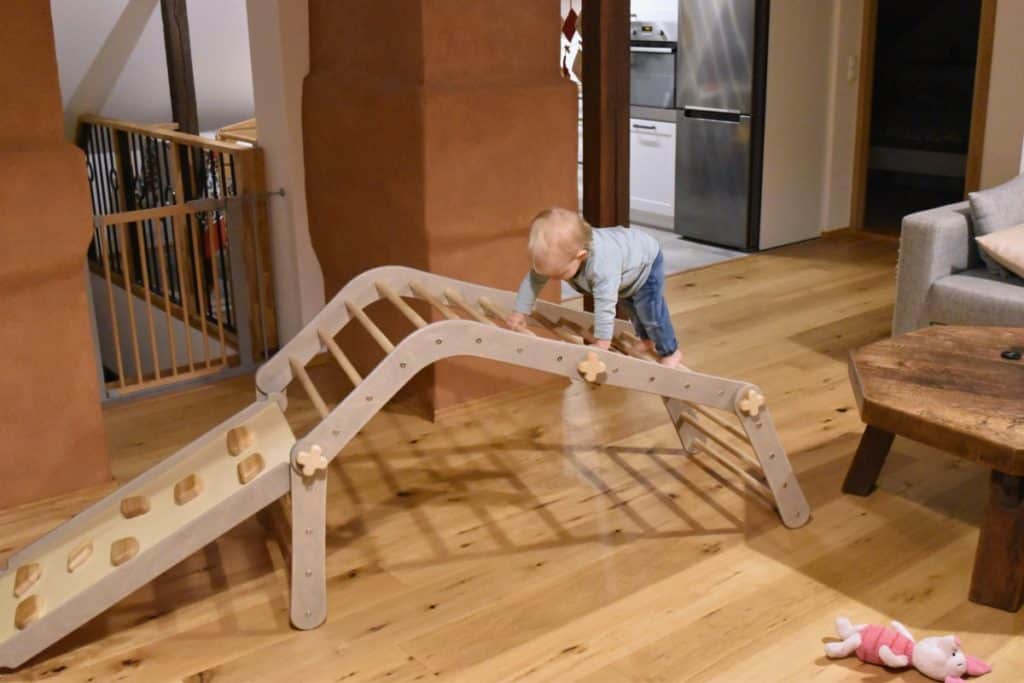
A really quick overview of Bilauf:
Bilauf builds transformable Pikler triangles. They can be used in multiple positions and angles, providing additional climbing opportunities, compared to traditional Pikler triangles. They are of high quality and priced just right.
If you are interested to learn more, here’s a hands-on review of what I and our 19-month old daughter think of the Bilauf Pikler triangle.
Assembly
The Bilauf Pikler is shipped disassembled and you need to put the elements together yourself. It took me (and my little helper) a little less than 30 minutes to fully assemble all the elements of our Pikler. Once the two smaller elements were assembled, I quickly fixed them together to get a first feel of the Pikler.
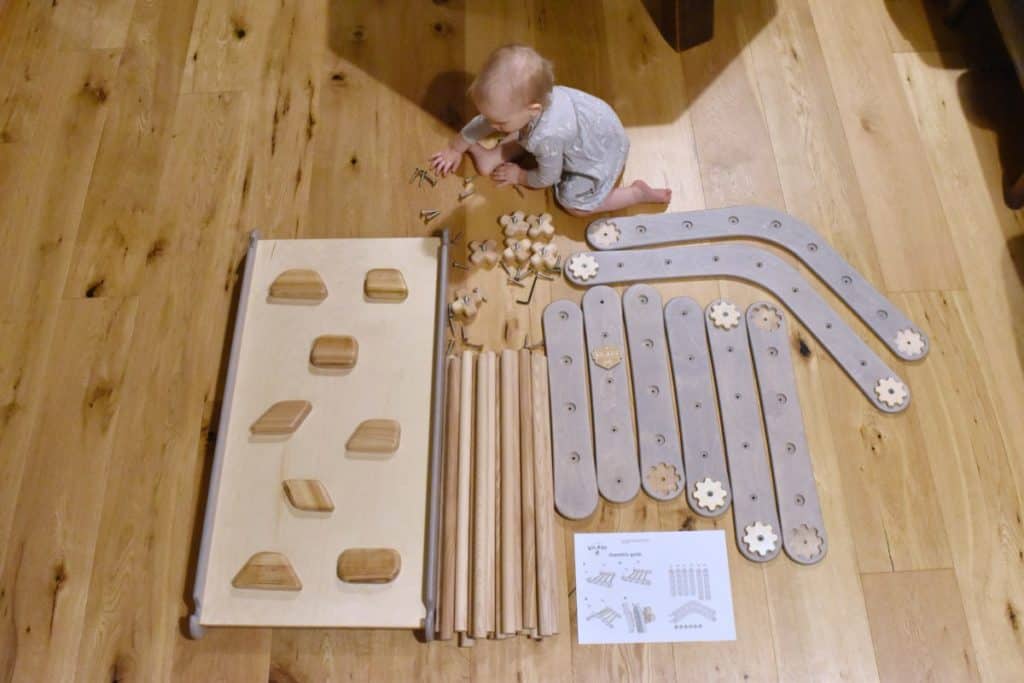
As soon as I put the Pikler on the ground, our daughter started climbing without any hesitation. The huge smile on her face was a definite sign of approval 🙂 This gave me a chance to quickly finish the other two sections.
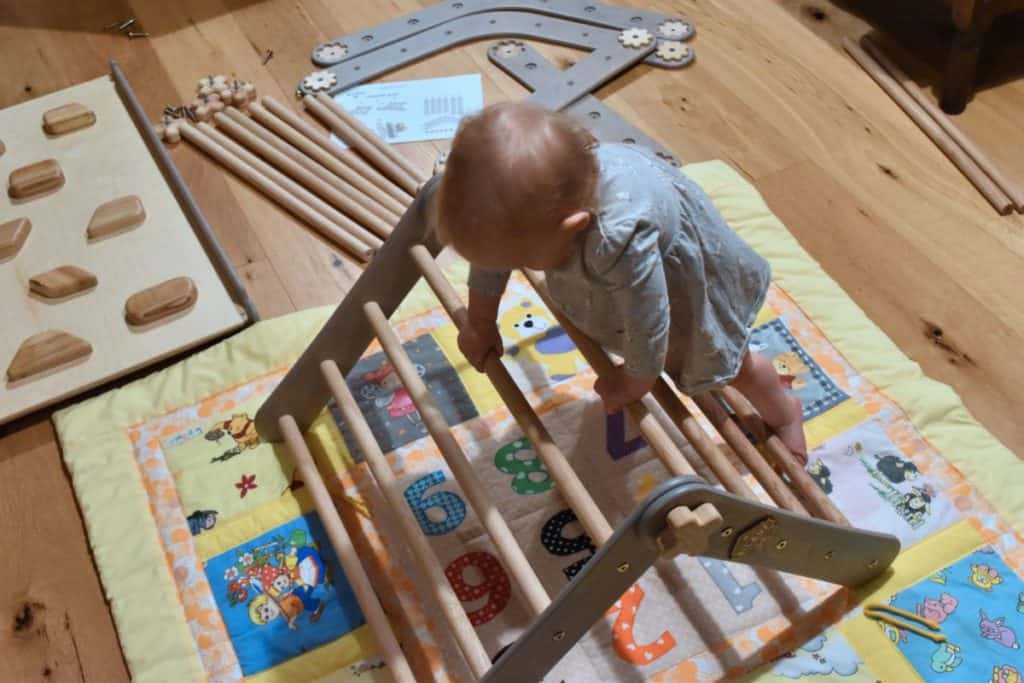
In short, the assembly of the sections is easy and you don’t need any special experience or skills to set it up.
What will take some practice at first, is changing the sections or the angles of the existing sections (‘transforming’ it). You’ll have to align the teeth of the elements properly (every 45 degrees) and then firmly press them together. It took me a few minutes on the first try but I quickly learned the tricks and it is a 30-second task now.
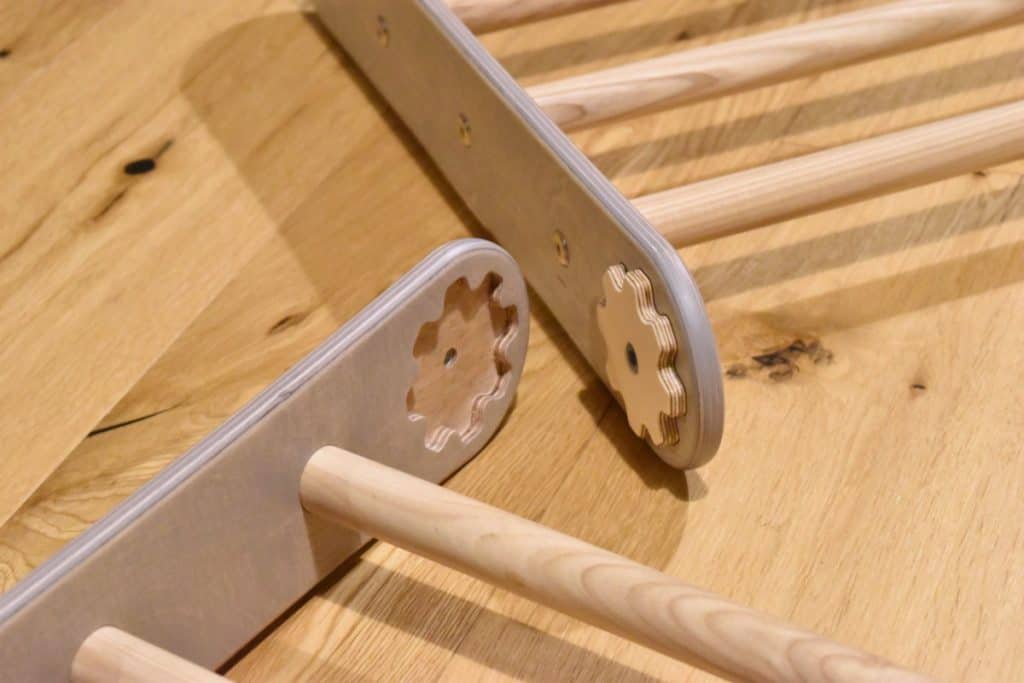
Quality
When assembling the product, I was a bit worried about the quality because the sides of the individual elements seemed a little askew.
However, once I gave each element a quick twist and tightened the screws, everything was fine. The Pikler is very stable – it stands firmly on the ground and all the joints are strong.
The Bilauf Pikler is really well finished – it has nice round edges without any imperfections. The sides are coated with a non-toxic water-based lacquer and the rungs with beeswax.

The manufacturer says that their Piklers have been tested with 100 kg (220.5 lbs) and the official weight limit is 50 kg (110.2 lbs).
We did do some weight-testing of our own and this seems about right.
There’s no doubt the traditional Pikler setup with two elements can withstand 100 kg / 220.5 lbs. All three of us climbed on it at the same time, and it held our combined weight of 284 lbs / 128.8 kg well. But the more complicated setups, using more elements, did not feel quite as strong.
The official weight limit didn’t seem to be an issue with any of the setups we tested. Both me and my wife felt comfortable climbing over them one at a time but it didn’t seem like a good idea for us to sit on top of the higher setups at the same time.
We had our fun while testing multiple setups and there’s a general remark we can make – the simpler the setup, the stronger it is.
Functionality
When we started looking for a Pikler triangle for our daughter, one of the main criteria was that it has to be transformable, so we could set up in more challenging combinations as our daughter grows.
The variety of climbing possibilities with transformable Pikler triangles allows kids to improve their climbing and other motor skills much more than with the traditional Pikler that only has a fixed position.
We wanted a high-quality Pikler that we could use for many years to come. And the Bilauf Pikler triangle is exactly it!
Most Bilauf Piklers are transformable – they have hinge-like mechanisms that allow them to be used in multiple angles and positions. Similar solutions are used in most of the transformable Piklers.
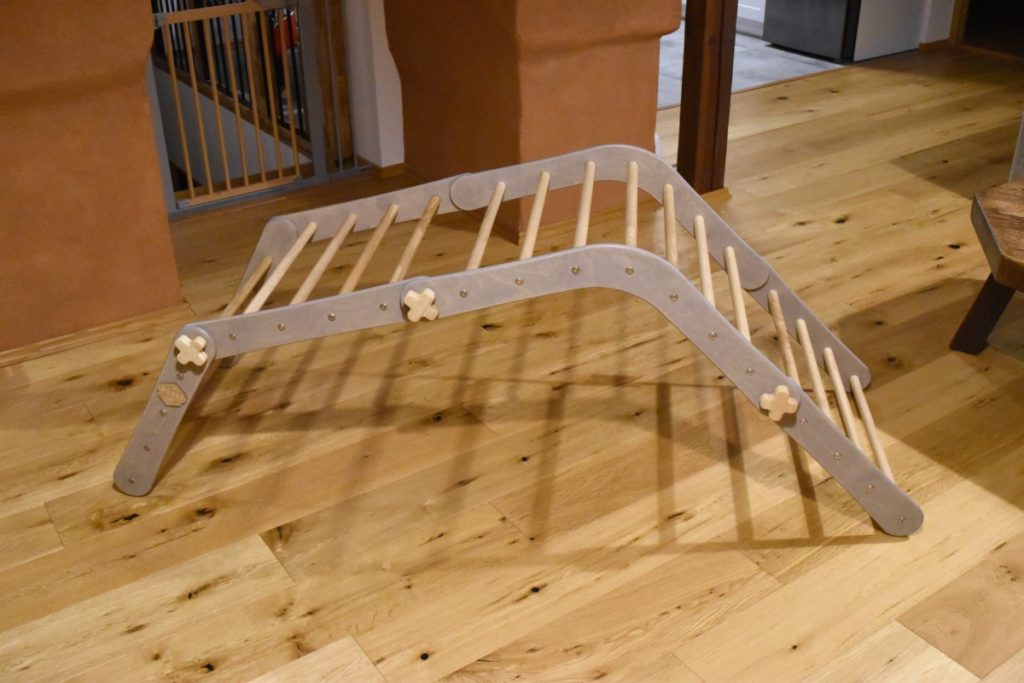
This type of design offers a wide variety of climbing possibilities, providing an age-appropriate approach for kids from around 6 months to 6 years. You can start with easy setups and move on to more advanced climbing frame setups as they grow.
Our daughter (19 months) has started with the easier options. She enjoys climbing up and down (even on the steeper setups), but she doesn’t like horizontal elements. No pressure from our side – everything in its own time.
As this climbing frame does offer a wide variety of climbing possibilities, we’re hopeful that our daughter will be motivated to use this equipment over the years to come.
We’ve had it for about a month now and at the moment, climbing on it is one of the first things she does in the morning after getting up. In the last week and a half, she has also used it every evening to exhaust herself before going to bed.

Besides its primary functionality (climbing) the Pikler can be used for multiple other fun activities. Our daughter’s favorite is building a castle with blankets and bringing her toys into it. If you are looking for more fun ideas, read this article from our blog.
Possible Setups
There are a ton of possibilities to set up the Bilauf Pikler triangle, depending on the package you get. We have the Chipmunk Rock set that consists of three straight elements (one is slightly longer than the other two), one curved element, and a slide/rock climbing board.
This set allows us to build a variety of climbing frames, including the traditional Pikler triangle. We first introduced a small classic Pikler setup, which was an instant hit with our daughter. As soon as we added elements and complexity to the setup, she wanted to climb those as well.
It is possible to change the angles between the elements in 45-degree steps. This means that you can get more variety even if you use the Bilauf Pikler in the traditional Pikler setup by changing the angle between the elements and playing with the steepness.

If you combine these two elements with the additional ones, there are just tons of different ways to create a climbing frame for your kids. Take a look at some of the possible combinations we have tried.
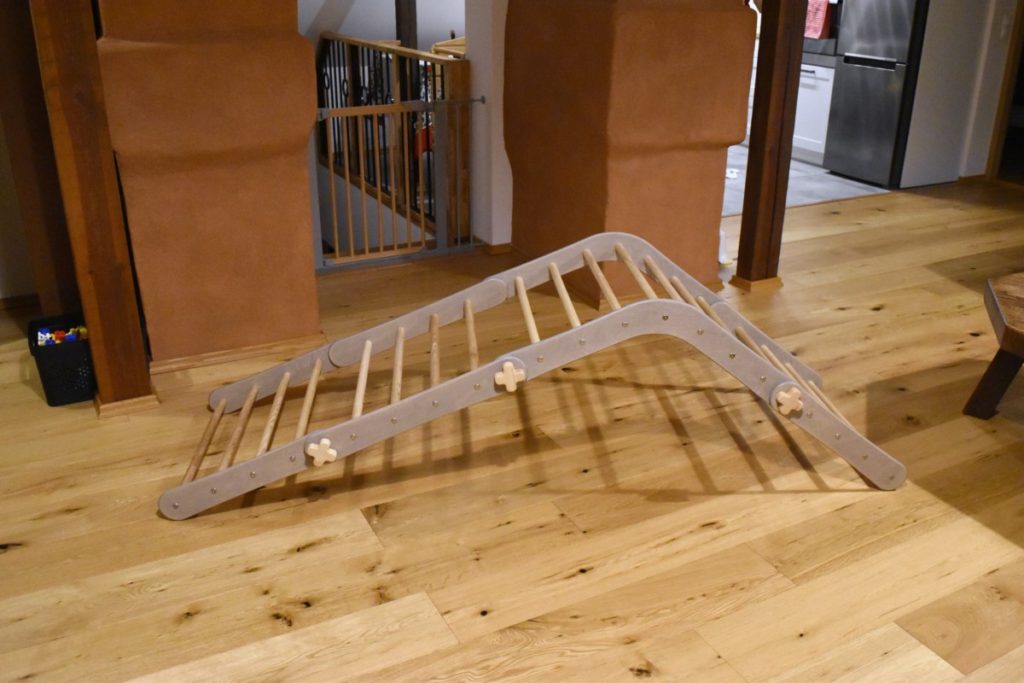
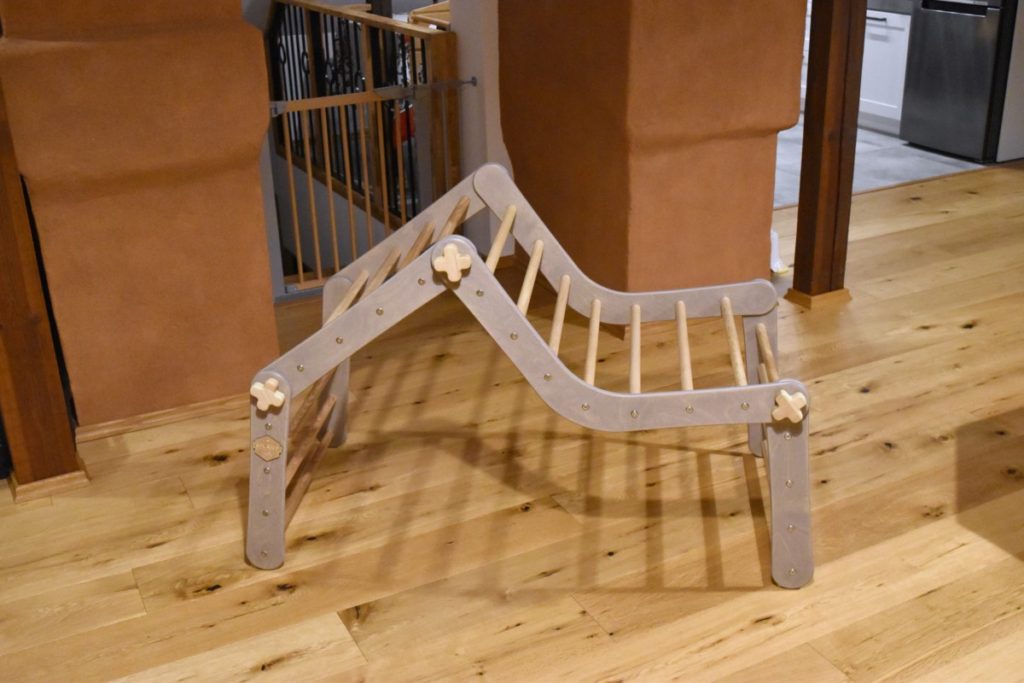
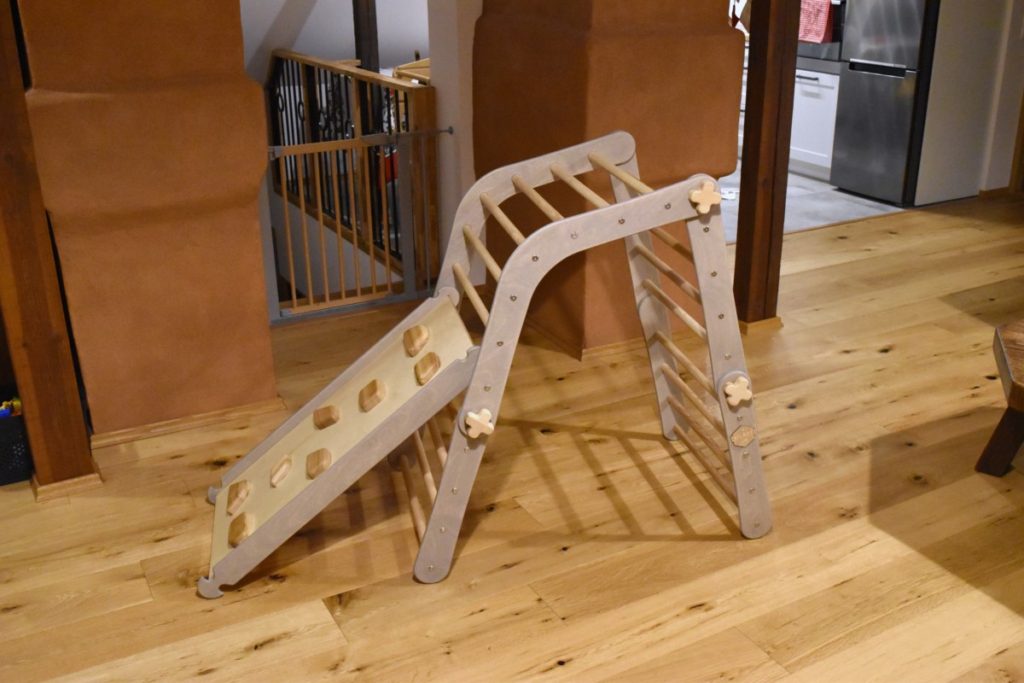
It’s relatively easy to change the setups – unscrew the screws, take elements apart, set up new angles or new elements, tighten the screws. It now takes us about 30 seconds per joint to change the setup, so the time it takes really depends on how many elements you want to change around.
The first few times it took longer, but once you get a feel of how to put the elements together, it becomes straightforward. Loosening and tightening the screws is also very easy thanks to the large X-shaped handles.
The bigger setups using all the elements can get quite tall, so it’s probably best to start with smaller ones and introduce the more advanced options when your kid is ready for them. And always make sure that all the elements are securely attached and the screws are tightened, so that it is safe for your kid to climb (read more about the safety of Pikler triangles).
We have found that setups with a horizontal element are the most difficult for our daughter. She likes climbing up and down but is not yet comfortable on the horizontal parts. Her current favorite setup seems to be this:
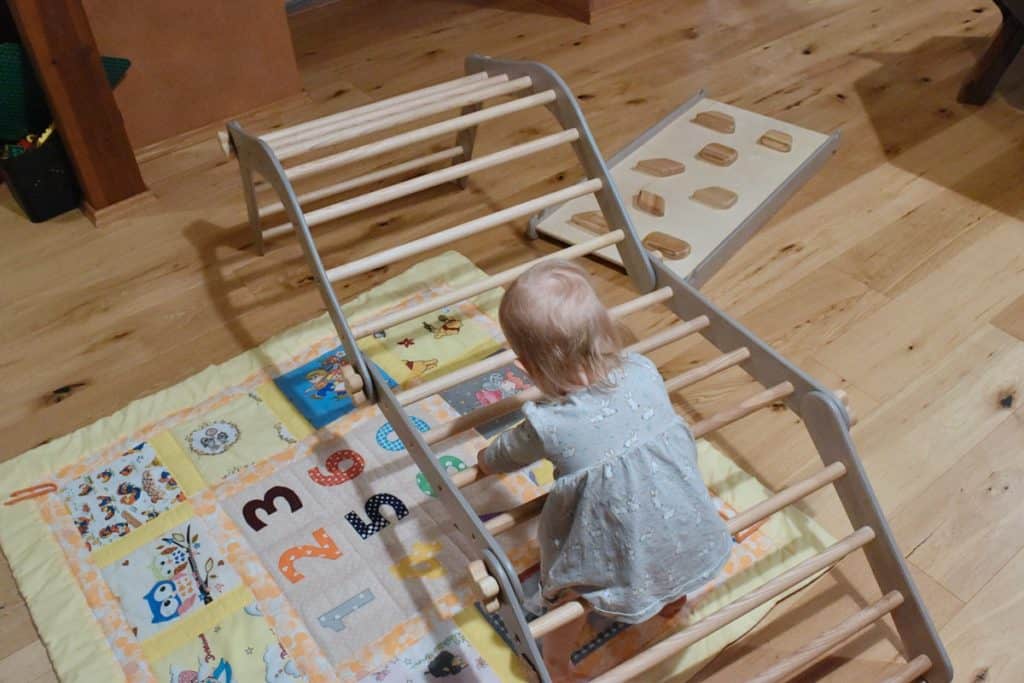
The fact that the Bilauf climbing frame can be set up in such a wide variety of ways prolongs its active use to many-many years (up to 6 years, according to Bilauf).
Design
When I was researching and comparing different Piklers, I wrote that, in my opinion, Bilauf Pikler triangles are some of the most aesthetically pleasing ones I have seen. The design, the finish, and their curved piece are just…beautiful.
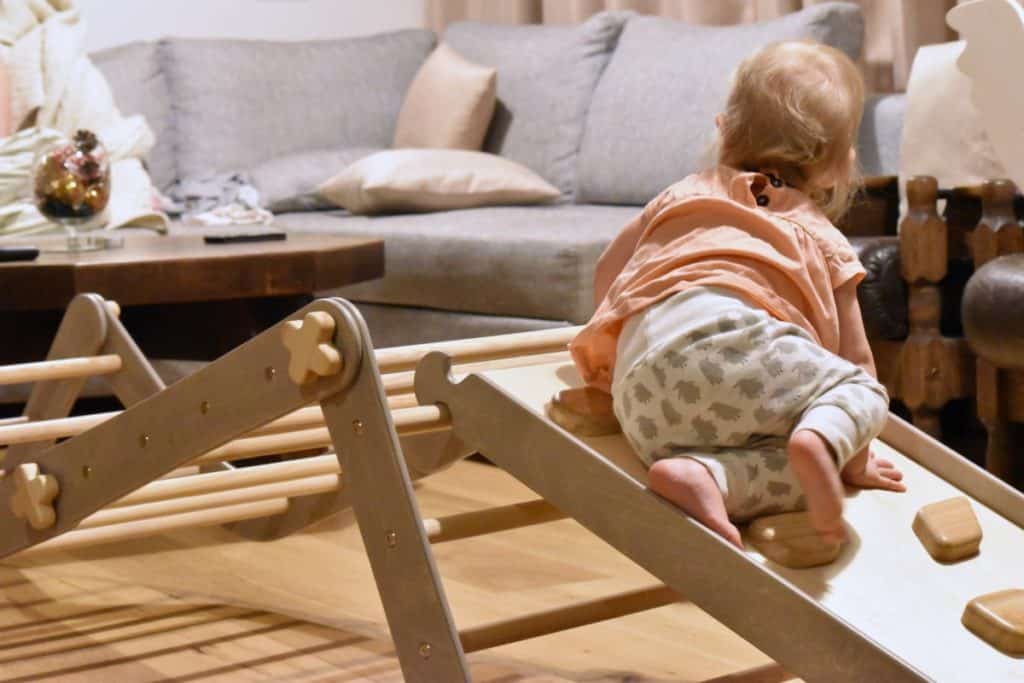
Our Pikler has a curved piece which, first of all, brings a lot of variety to the climbing possibilities, but also looks really nice with the climbing frame.
While the white versions are nice as well, my eyes just rest on the grey rustic one. We have a bit of a rustic vibe at home, so it matches our apartment just perfectly and is like an element of interior design.
The aesthetic side was an important factor for us when choosing a Pikler because our daughter’s bedroom is tiny and we knew the Pikler would spend most of its time in the living room.
It is also easy to take apart and store. The disassembled elements take up relatively little space.

As far as I know, Bilauf builds simple one-color frames, so if you are looking for a colorful Pikler, you’ll need to look for some other manufacturers (see our comparison of 50+ Pikler triangles).
Price
The Bilauf Pikler triangle series are low-to-average-priced compared to other transformable Piklers, starting from around $250. They do sell the traditional Pikler separately as well, starting around $150.
I’d say that Bilauf Piklers are excellent value for the money and we are really happy with ours.
Downsides
To be honest, there’s not much negative we can say about the Bilauf climbing frame in particular after having it for a month.
However, transformable Piklers in general are more expensive than the traditional ones. And the larger setups with more elements tend to take up more space in comparison to the traditional ones.
Final Verdict
If you can afford the price difference and have the space, I’d definitely recommend getting a transformable climbing frame over the traditional Pikler triangle. And the Bilauf sets are an excellent choice.
Take a look at our comparison of Pikler triangles to compare Bilauf to others, or visit Bilauf’s Etsy store to choose a suitable version for your kid.

Great article thank you. May I suggest another excellent company worthy of mention for excellent products and customer service. Woodgrainlab. Latvian based company who you can find selling on Etsy – woodgrainlab.etsy.com
They have excellent reviews!
Hi Michael, thank you for the suggestion. We will check them out 🙂